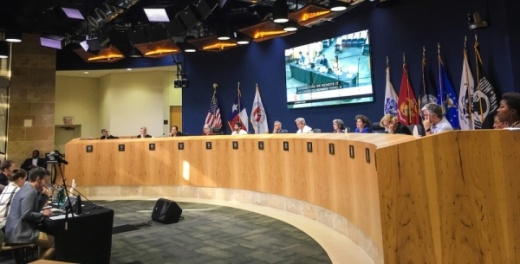In its second of three votes, City Council approved the proposed rewrite of the city’s land development code and zoning maps with a 7-4 vote, with Council Members Kathie Tovo (District 9), Leslie Pool (District 7), Ann Kitchen (District 5) and Alison Alter (District 10) voting objecting to the plan. The same four council members, as a voting bloc, regularly found themselves in the minority through the 62 votes on line-item and directional changes City Council made during the three days of deliberation.
If all goes according to plan, City Council is now poised to make a final decision on the new land development code and zoning maps by early April. It would mark the culmination of roughly eight years of taxing work by the community to bring its 36-year-old land use rules into the 21st century. Over those eight years, the future of land development in Austin has been the city’s dominating political divide.
The three-day deliberation accentuated the conflicting land use ideologies held by the community and elected officials. Tensions rose at several points of the debate, with members of the majority refusing to engage with the minority. At one point, Alter called the tenor of the proceedings “indefensible.” Of the 62 votes on amendments taken from Feb. 11-13, only 18 were unanimous. Of the 44 split votes, 18 found the Tovo, Pool, Kitchen and Alter bloc as the lone minority votes.
As the 7-4 votes continued to pile up, Mayor Steve Adler offered an ultimate compromise with members of the minority. Tovo proposed an amendment that would reduce many proposed transition zones to a depth of two lots. Transition zones, among the most contentious aspects of the rewrite process, are zoning categories that allow moderate housing density and typically fall between the less-dense neighborhood interiors where single-family homes are located and the highly-dense transportation corridors where one would find high-rises.
“If you get this,” Adler asked Tovo and Alter, “would you support the [entire] land development code?”
Tovo, Alter and Kitchen said such a change would be a crucial step toward their support of the code and rebuilding community trust, which they said has eroded during this process.
Staff told City Council the change would only reduce the city’s housing capacity by 400 units.
Although the proposal carried a shock factor when it was first introduced Feb. 12, some council members appeared more amenable to the idea Feb. 13.
“I’m open to this conversation,” District 6 Council Member Jimmy Flannigan said, saying that he hoped City Council could bring themselves and the community back together “as much as we can.”
City Council now waits for city staff to take the approved changes and publish a new draft of the code and zoning maps. Council is scheduled to take its final vote between late March and early April.





